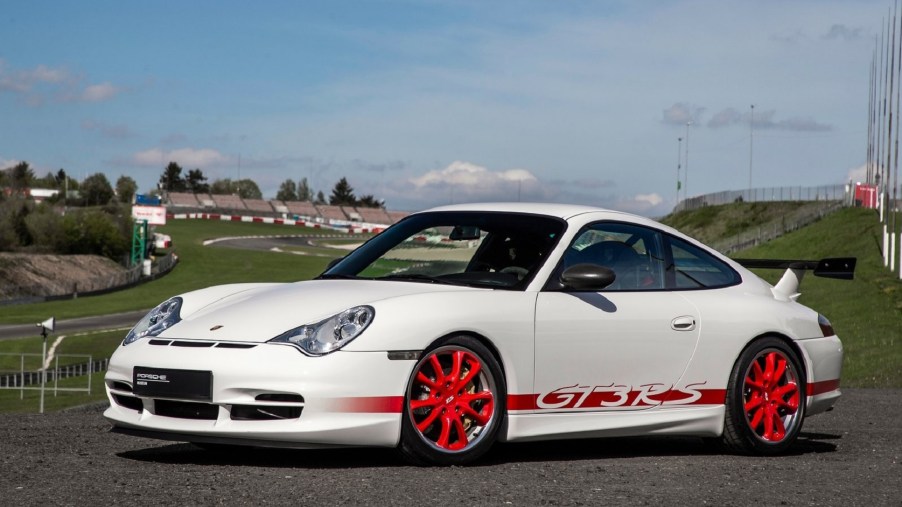
The 2003-2005 GT3 RS Is the Best 996 Porsche 911 We Never Got
The 996 generation of the Porsche 911 doesn’t get a lot of love from the fanbase in general. That’s mostly due to the infamous IMS bearing issue, which is somewhat overblown. However, not only is it fixable, but it also doesn’t affect every 996-gen 911. The 996 Turbo, for example, doesn’t have that flaw. And neither does the 996 GT3. However, we here in North America never received the best version of that car: the 2003-2005 Porsche 911 GT3 RS.
The 2003-2005 Porsche 911 GT3 RS set the stage for the models to come
The Porsche 911 GT3, RS or otherwise, is something of a deliberate throwback. Even today, when every other 911 has a turbocharged engine, the GT3 remains naturally-aspirated. And apart from the 991.1-gen model, every version comes standard with a manual, Automobile reports. That recipe started when the 996 911 introduced the GT3 name as a way of bringing racing tech to the street, Road & Track reports. The RS model, though, takes it one step further.
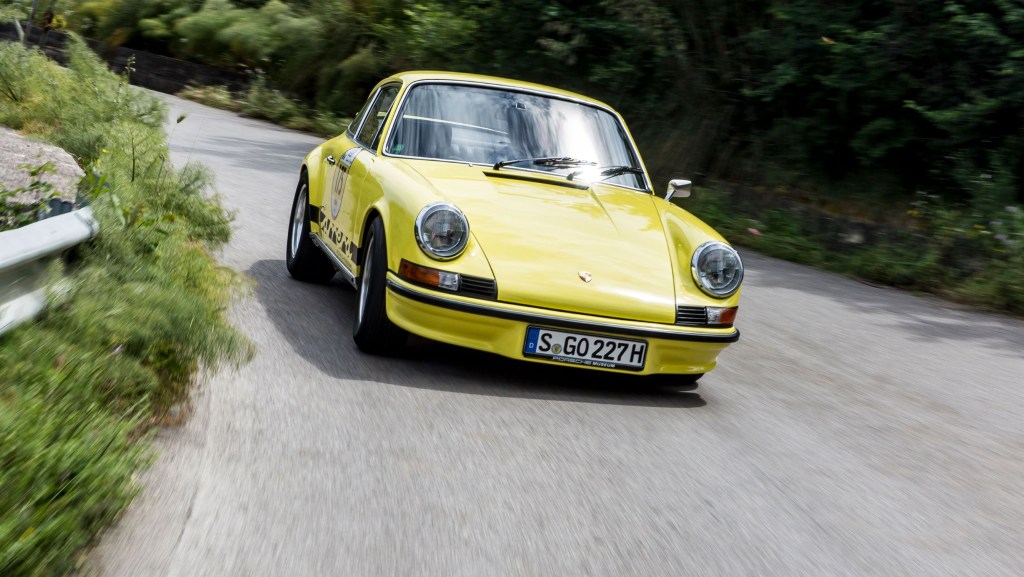
The RS name dates back to the 1973 Porsche 911 Carrera 2.7 RS, R&T explains. It has a larger, more powerful engine than the contemporary 911 and a lower curb weight. It’s a genuine homologation special, an actual street-legal race car. And so is its spiritual successor, the 996 Porsche 911 GT3 RS.
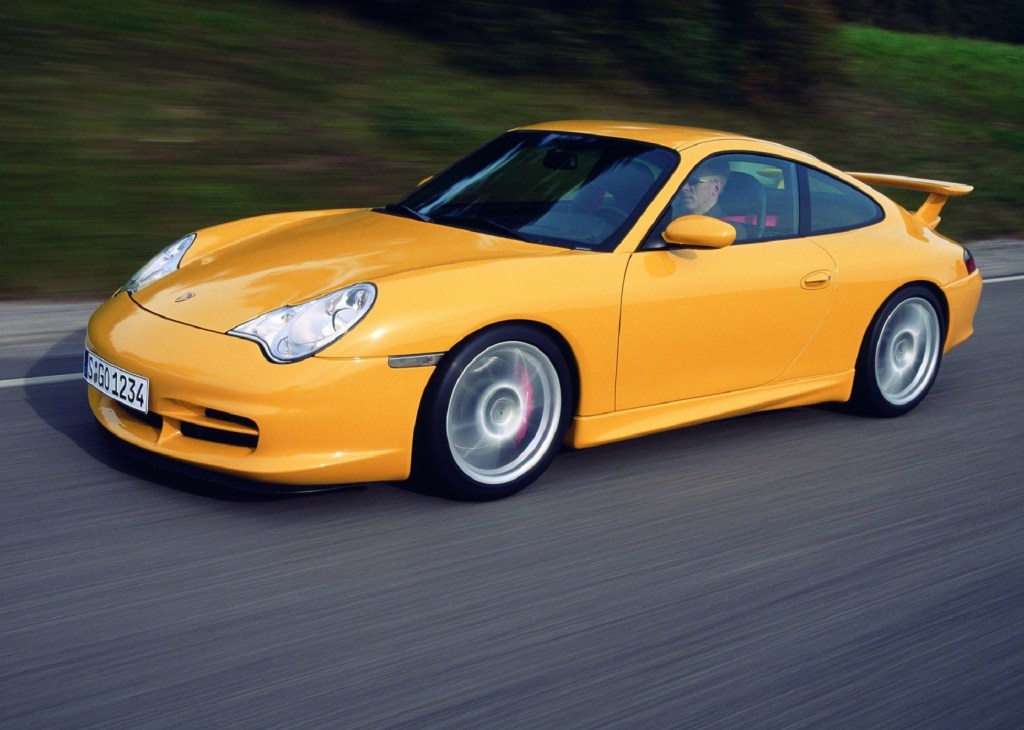
The first Porsche 911 GT3 launched in 1999, R&T reports, but didn’t arrive in the US until its 2004 update. The ‘base’ US-spec 996 GT3 has a 3.6-liter flat-6 with 375 hp and 284 lb-ft, Automobile reports. That’s more power and more torque than the standard 911 and the earlier GT3.
The 2004 GT3 is also lighter than the contemporary 911 and has stiffer adjustable suspension, a stronger 6-speed manual, a limited-slip differential, and a transmission-oil cooler, Car and Driver reports. Plus, an adjustable rear wing, adjustable anti-roll bars, and larger front brakes, Petrolicious reports. But there’s no rear seat, traction control, or stability control, MotorTrend reports.
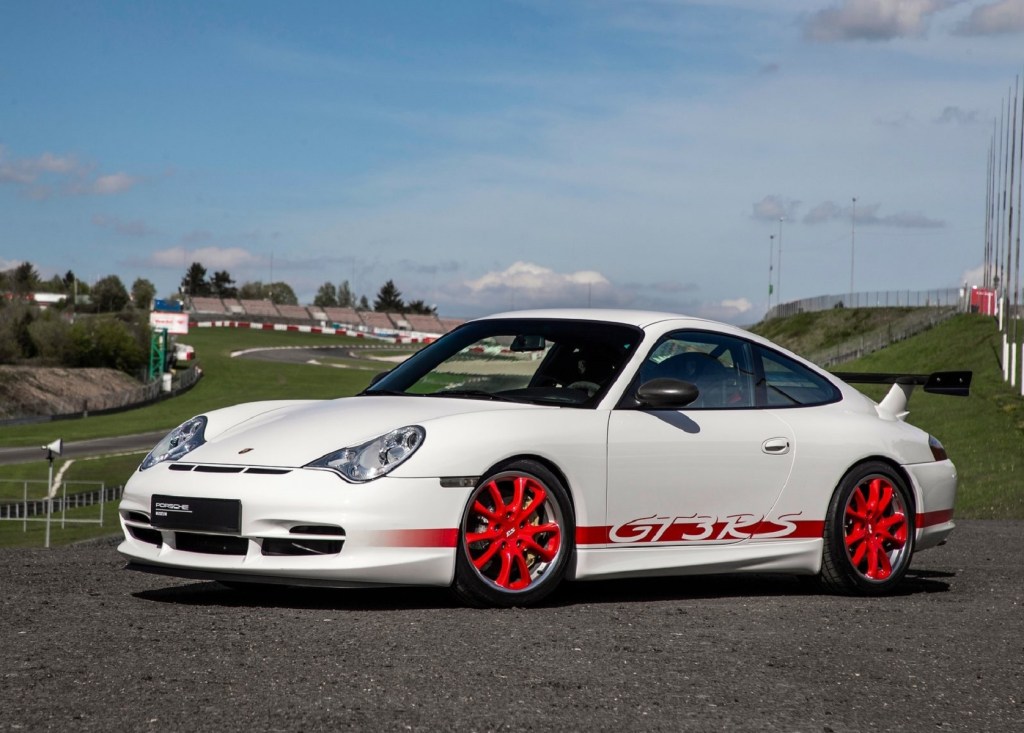
The 2003-2005 Porsche 911 GT3 RS has all that and more. While the ‘standard’ 996 GT3 was essentially a production trim, the RS is a true homologation version of the 911 RSR race car, MT reports. It’s even lighter than the GT3, thanks to a carbon-fiber hood and roof, polycarbonate rear window, and standard carbon-ceramic brakes. And the suspension is even sportier, Evo reports, as well as fully-adjustable and lowered.
The 996 Porsche 911 GT3 RS “is a treat to pilot,” Car and Driver says
The standard 996 Porsche 911 GT3 still feels fast by modern standards, R&T reports. The steering isn’t as fast as in a modern 911, but it delivers even more feedback. The car feels agile and light, though predictably, a bit stiff over broken roads. But the engine’s “orchestral” 8200-RPM redline makes up for it, MT reports.
And all of that is further enhanced in the 996 GT3 RS. The suspension feels “taunt, precise, and controlled,” Car and Driver reports. The RS “never stops talking” to its driver, Roadshow reports, which means that, despite its lack of electronic driver aids, you can confidently drive it at speed. Speaking of speed, Porsche likely under-reported the 3.6-liter engine’s output, Automobile reports. Thanks to ram-air effects and other internal mods, it likely puts out over 400 hp, Top Gear reports. And like the 996 Turbo and base GT3, it’s a ‘Mezger’ engine, so no IMS issues.
To be fair, the 996 GT3 RS shows its age in some places. For its time, it was stiff and stable, but the later cars are even more so. The shifter’s throws are also longer, and the tires aren’t quite as grippy. Plus, the clutch is fairly heavy, DriveTribe reports.
However, compared to the later models, it feels rawer and more simplistic. In other words, like the vintage air-cooled 911s that have gotten so popular these days. Which, given the 996’s reputation, is more than a bit ironic.
You’ll have to wait a while to get one
Unfortunately, if you’re interested in getting a 996 GT3 RS, you’re in for a bit of a wait. As it was never sold in North America, you’ll have to follow the 25-year import rule. But that does give you a few years to build up the necessary funds.
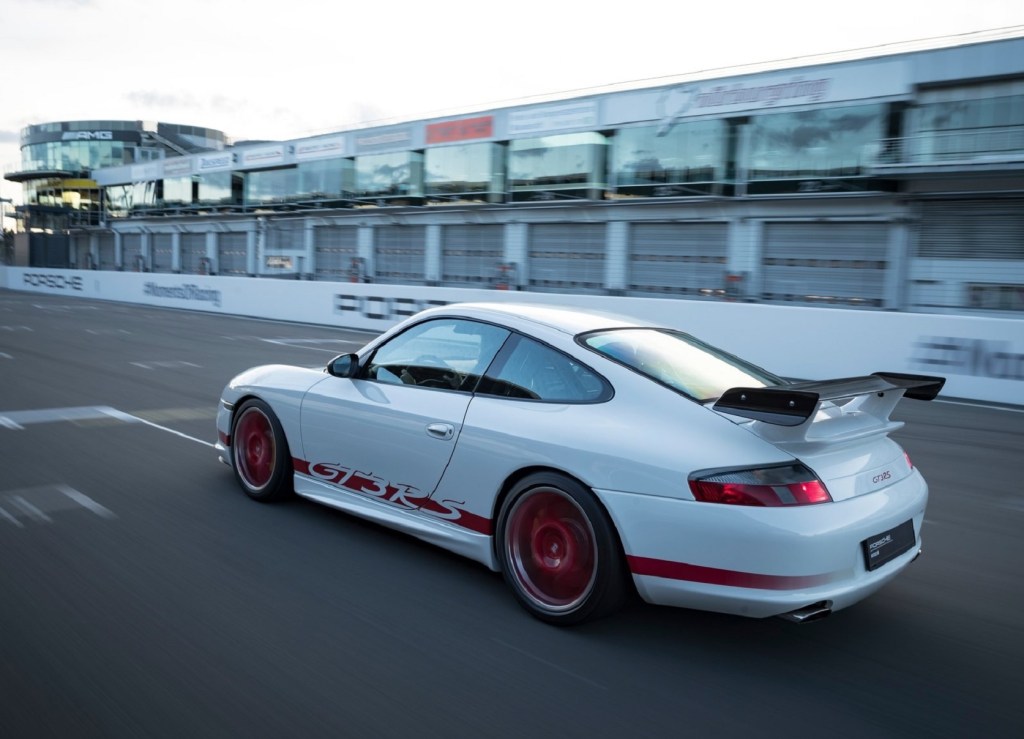
Porsche made just 680 996 GT3 RS cars for the whole world, and they’re noticeably more valuable than the base GT3s. A US-spec 996 GT3 typically sells for $60,000-$80,000 on Bring a Trailer. But a good-condition RS can easily go for double that price, Hagerty reports.
Follow more updates from MotorBiscuit on our Facebook page.


